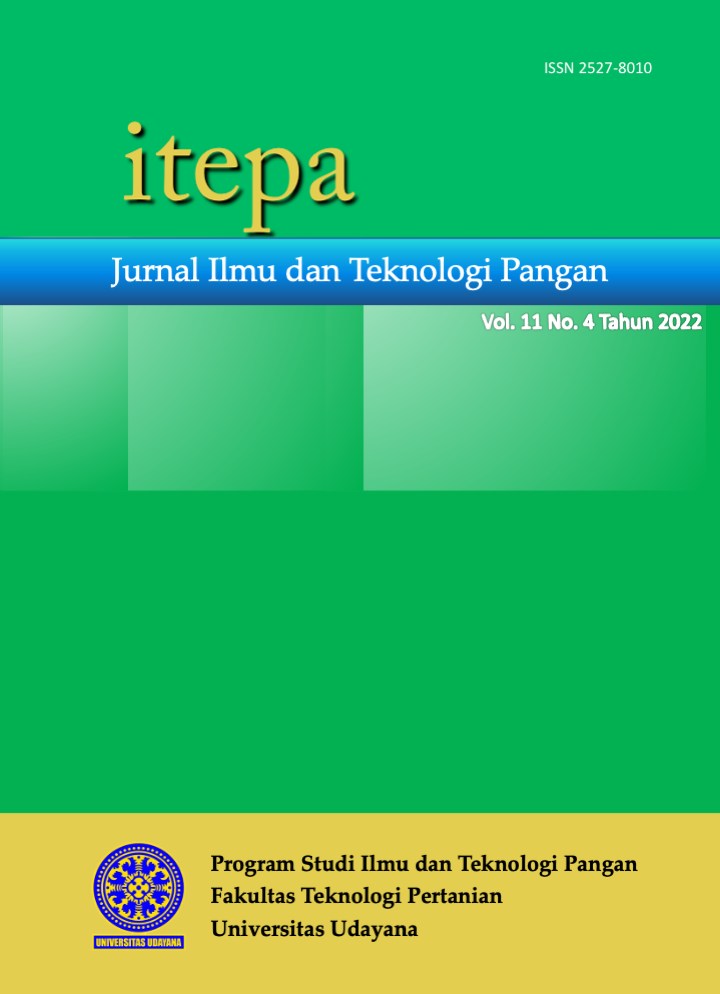Pengaruh Penggunaan Isolat Weissella confusa F213 dan Lactobacillus rhamnosus SKG34 terhadap Kandungan BAL Minuman Probiotik Sari Buah Naga Merah
Abstract
This research was aimed to determine the effect of using lactic acid bacteria (LAB) on the LAB content of red dragon fruit (Hylocereus polyrhizus) probiotic drink and to determine the right type of LAB to produce red dragon fruit (Hylocereus polyrhizus) probiotic drink with the best characteristics. This study used a Completely Randomized Design (CRD) with treatment factors namely the type of LAB which consisted of 3 levels including Weissella confusa F213, Lactobacillus rhamnosus SKG34, and a mixture of Weissella confusa F213 and Lactobacillus rhamnosus SKG34. The treatment was repeated 5 times to obtain 15 experimental units. Data were analyzed using Analysis of Variance (ANOVA) and if the treatment had a significant effect, then continued with Duncan Multiple Range Test. The results showed that the use of different LAB types had a significant effect on total LAB, pH, total acid, sour taste scores, and sweet taste scores of red dragon fruit probiotic drink. The mixture of Weissella confusa F213 and Lactobacillus rhamnosus SKG34 treatment produced the best characteristics of red dragon fruit probiotic drink with total LAB 11,23 log cfu/ml; pH 3,90; total acid 0,2%; and total sugar 7,96% with color and taste (slightly sour and slightly sweet) liked; aroma rather liked, and overall acceptance liked.





